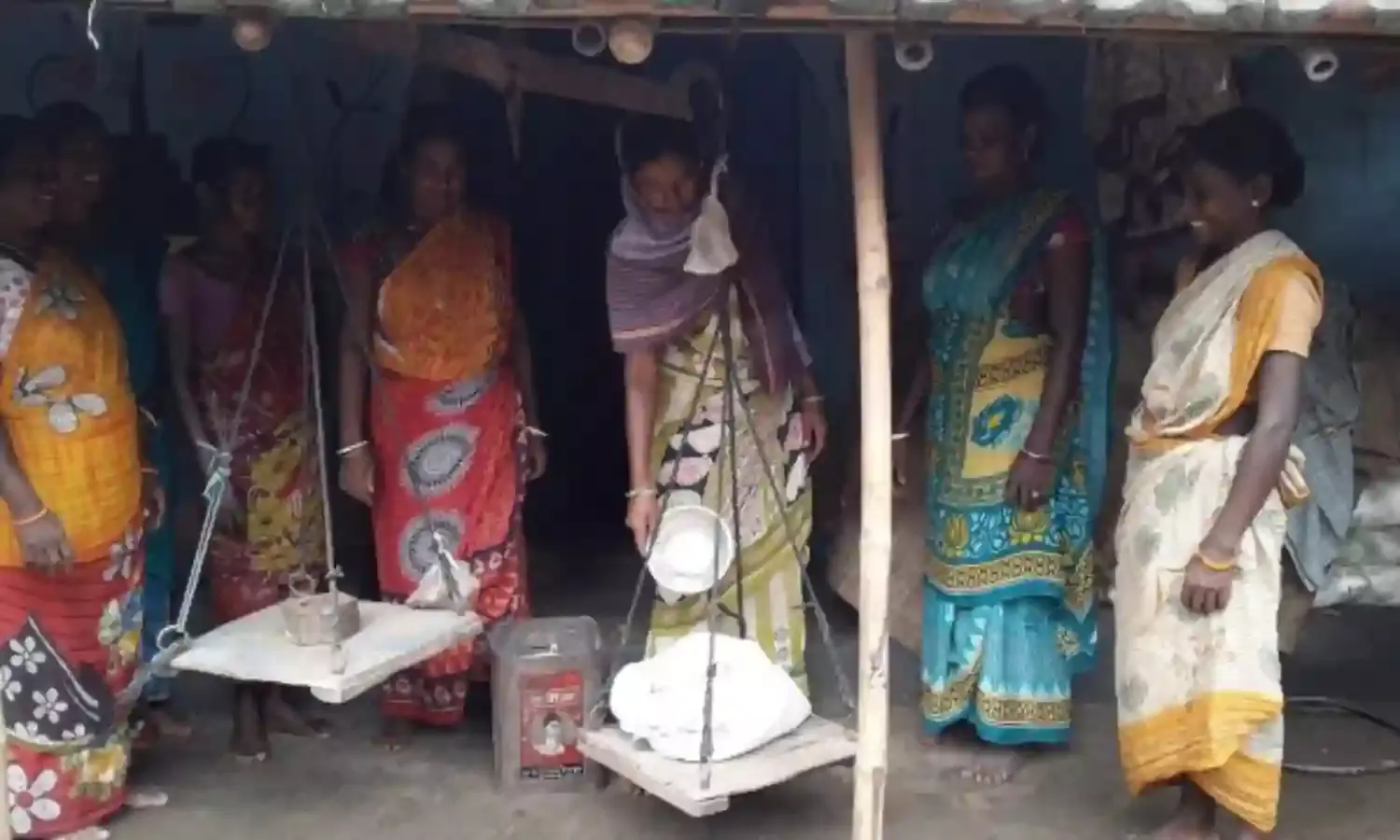Activists in Jharkhand Raise Serious Objections to Rice Fortification Scheme
Iron fortified foods are not advised for people with genetic conditions prevalent here

As the plans of the Government of India to hurriedly spread rice fortification face several serious objections from experts, food rights campaigners have prepared a detailed report on the matter in the specific context of Jharkhand and particularly its Indigenous communities which carries the debate further.
At the end of a three day fact finding visit to the state the Right To Food Campaign and Alliance for Sustainable and Holistic Agriculture urged the Jharkhand government to stop the distribution of fortified rice in the state immediately. Their report released at a press conference in Ranchi on May 11 points to the many serious concerns with regard to indiscriminate distribution of iron fortified rice to impoverished households and in ICDS anganwadis and schools.
The team has emphasized that in Jharkhand, although there are high levels of anaemia as in much of the country, there is a significant proportion of Adivasi people amongst whom various blood disorders like thalassemia and sickle cell anaemia are prevalent. Iron fortified rice is not the answer for people with these blood disorders.
In fact the Food Safety and Standards Authority of India’s regulations on fortified foods require mandatory labelling with a warning to thalassemia patients to consume iron fortified only food under medical supervision. It further advises sickle cell anaemia patients not to consume iron fortified food.
As the fact finding team has stated, “On the one hand, the government understands the health risks of consumption of iron fortified food for many people with particular health conditions in our society, and brings in regulations like this. On the other hand, the government itself is distributing such rice in all its food schemes where the poor have no option but to depend on this entitlement for their food security.
“What is more, in Jharkhand due to lack of population-based screening, people with these health conditions may not know that they have these blood disorders; further, the government is also distributing such rice without any proper information to or dialogue with the communities”.
The team’s field visits showed that many people do not prefer to consume this rice and are even separating and removing the fortified rice kernels before cooking and consuming it.
The team included Dr Vandana Prasad, a public health expert also associated with the Right to Food Campaign, Kavitha Kuruganti, a farmers’ rights activist with ASHA Kisan Swaraj, Balram and James Herenz of the Right to Food Campaign, Jharkhand, Rohin Kumar of Greenpeace India, Soumik Banerjee of ASHA Kisan Swaraj, and Raj Shekhar Singh of the Right to Food Campaign National Secretariat.
They visited five villages in the Khunti and East Singhbhum districts from May 8 to 11 meeting with Public Distribution System dealers and recipients, Community Health Centre doctors, ASHA and anganwadi workers, cooks in anganwadis and schools, officials and patients in district level hospitals, a rice mill owner and others. They also met some government officials and elected representatives.
The team has stated, “Fortified rice is not a proven approach to tackle anaemia effectively, as per published papers and reviews. It is surprising that the Government of India, in a hasty blanket approach, has already scaled up distribution of fortified rice to 257 districts across India, even though the so-called ‘pilots’ have not completed three years, nor evaluated, nor findings put out in the public domain.
“In Jharkhand too, official data on the government portal shows fortified rice being distributed in two blocks of East Singhbhum (the designated Pilot district in the state) only from October 2021. However, without any data being shared on the portal about the distribution in other districts, fortified rice has already been taken to several districts. What is the meaning or purpose of the Pilot then?”
Indicating the safer approach the team stated, “Anaemia and other malnourishment conditions have to be tackled effectively. However, the approaches have to be proven, holistic, natural, safe and community controlled. Dietary diversity is an important approach and cannot be given short shrift due to hasty adoption and attention to risky unproven approaches like food fortification.
“In Jharkhand, civil society groups have already demonstrated there are effective ways of dealing with nutrition holistically. Local, diverse foods (including uncultivated forest foods and traditional crops and varieties) play a key role along with participatory learning in these community-led approaches.
“The government has to expand its food security basket to include millets, pulses, eggs, cooking oil and milk in the food schemes. Nutrition Gardens should be scaled up along with support to extensive livestock systems that provide nutrition as well as support livelihoods. Further, a well-managed micronutrient supplementation program can be run with the supply of such micronutrients smoothened out and last mile delivery ensured”.
This and associated campaigns have given a very timely warning which our governments should heed and withdraw the rice fortification scheme at the national level before it causes further harm.
(The allocation of wheat for the Prime Minister’s Poor Welfare Grain Programme has been cut to 7.1 million tonnes from 18.2 million, Reuters reported. The allocation of rice has been raised to 32.7 million tonnes from 21.6 million.)



